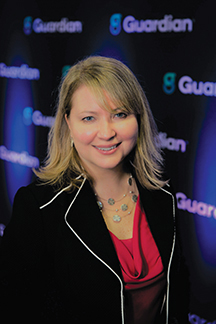Hospital indemnity maintains its momentum
Carriers seek to strengthen communication with buyers
By Thomas A. McCoy, CLU
The outlook for hospital indemnity insurance in the workplace continues to be favorable after a strong post-pandemic performance in 2022. Voluntary hospital indemnity sales grew 13% last year, roughly in tandem with the growth in critical illness and accident, according to Eastbridge Consulting Group.
Eastbridge’s 2021 Voluntary Employment Trends Report projects that by 2025, 74% of employers will offer hospital indemnity. Insurers in the hospital indemnity market are crafting sales strategies to take advantage of this growing acceptance of the product among employers.
Guardian Life’s 2021 Benefits Optimization Report found that between 2019 and 2021, the percentage of employees owning critical illness and hospital indemnity increased by 36%. Generally, employers offer hospital indemnity alongside critical illness and accident.
John Gallant, head of underwriting and product, group benefits, at The Hartford, says, “We’ve seen more workers elect hospital indemnity, and we’re pretty bullish on the product.” Along with other companies in the market, The Hartford believes that even stronger sales growth can come through better education of the buyer.
This need was brought home by The Hartford’s 2023 Future of Benefits Study. It found that 52% of GenZ workers think hospital indemnity is meant for someone else; 47% of millennials, 39% of Gen X and 31% of baby boomers said the same.
“When we asked consumers, ‘what does hospital indemnity cover?’ we heard responses such as, ‘It’s coverage for when the hospital overbills you.’ Or ‘It sounds like the name of a coverage hospitals have to have when patients sue them.’ Of course, many people do understand the general purpose of the coverage, but we think the industry could do a better job of explaining it,” Gallant notes.
Overall, he says, “The study found that about a third of U.S. workers don’t have a good understanding of their employee benefits and, even when they elect coverage, they aren’t sure how to use them.”

“Many people understand
the general purpose of the coverage,
but we think the industry could do a better
job of explaining it.”
—John Gallant
Head, Underwriting and Product, Group Benefits
The Hartford
As a first step toward better education of buyers, The Hartford is revising its benefits product names. Hospital indemnity insurance is now known as hospital cash benefits. (Accident insurance became accidental injury benefits and critical illness insurance became critical illness benefits.)
Sarah Oliver, head of voluntary products at Prudential Financial’s insurance business, agrees that “the industry probably could have used some marketing help when they came up with the term ‘hospital indemnity.’ It can be confusing to some buyers,” she says.
Prudential uses a multi-dimensional approach to educating benefits plan participants about hospital indemnity, critical illness and accident insurance. “We try to meet the buyers where they are,” says Oliver. “We have an array of decision support options to provide product information.
“We have the ability do person-to-person enrollment virtually using benefits counselors,” she continues. “Virtual options work well when someone wants to have a spouse on a phone call with them when discussing their benefits choices. Often, the benefits counselors are retired persons who have a lot of life experience and can convey the value of the product with personal stories.”
Prudential also recently entered into a partnership with Nayya, an artificial intelligence-based platform, which provides digital decision support for self-service enrollment. “It will ask the enrollee a handful of questions related to demographics, provider care preferences and the person’s medical plan,” Oliver explains. “Based on the answers provided, it will make a recommendation and explain its reasoning.
“Nayya provides a deeper understanding of the voluntary products and how they work together, which helps those enrolling. Another benefit we have seen is that, when Nayya is used, it reduces calls to the HR team during enrollment.”

Guardian also partners with Nayya as one of its enrollment methods for voluntary employee benefits. Dawn Sandt, head of supplemental and life products for Guardian Life, states that after an employee enters relevant information, “they receive plan recommendations based on medical needs, budget and lifestyle within minutes.”
The Hartford looks at worker demographic information and other data on individuals’ buying behaviors and social attributes. Its Enrollment Optimizer tool then uses the information to help target voluntary product recommendations.
“We present product choices in a variety of formats including videos and other visual aids that include plain language as well as specific scenarios related to the coverage,” says Gallant. “We partner with the broker to integrate these various tools into the enrollment experience with the aim of simplifying the buying decision.
“While we would prefer an entirely digital enrollment experience because we think that provides the best consumer experience, we can adapt to whatever an employer prefers, which would include phone or other support.
“Also, at the employer’s discretion, we communicate with plan participants about hospital cash benefits or other voluntary products at times other than the enrollment period to help keep benefits top of mind,” Gallant notes.
In 2019, Prudential surveyed more than 2,500 employees with access to hospital indemnity, critical illness and accident, comparing the traits of buyers to non-buyers of these coverages. Except for the increased tendency of buyers to have greater incomes and total assets, the study found little difference in the demographic characteristics of the two groups.
“Hospital indemnity can appeal to a wide age range of buyers,” notes Sandt. “The most common hospital indemnity claim is for individuals who are having a baby, which takes in the younger demographic. Then, as people age, they may be concerned about being hospitalized for pneumonia or some other type of serious illness.
The one trait that most distinguished the buyers from non-buyers in the Prudential study was life experiences. Individuals who knew someone who had medical insurance but nonetheless was financially devasted because of an illness or injury was 33% more likely to be a buyer of one or more of the coverages—critical illness, hospital indemnity or accident. Individuals who had received a much larger than expected medial bill were 29% more likely to be a buyer.
Buyers also were more likely to review their benefits carefully each year; 52% of them did so versus 40% of non-buyers.
“Employers have lots of reasons for offering supplemental health benefits, including hospital indemnity,” says Sandt. “Mostly, it is about making sure they offer good financial wellness tools for their employees. It also can be important to their recruitment and retention strategy.
“Our Benefits Optimization Report that just came out found that 57% of workers who own at least one supplemental health product say they are somewhat or very unlikely to change jobs in the next year, compared to 43% without any of those products.”
The Guardian study also shows that workers who own supplemental health insurance are 25% more likely to report high overall well-being compared to workers who don’t.
“From our studies, we’ve found that many individuals cannot afford a medical expense of $2,500 or more,” Sandt says. “Considering the cost of a hospital stay, the hospital indemnity product addresses a crucial financial need.
“An important part of our approach to hospital indemnity and our other supplemental health products is to simplify the process,” Sandt adds. “Through our claims process, we integrate our supplemental health claims with our short-term disability (STD) product to ensure that employees going through a challenging event get all the benefits they need.
“If Guardian has the short-term disability, paid family leave or state-mandated disability product with a policyholder and they also have a supplemental health product, if any of the mentioned disability claims are submitted, we check to see if they are also eligible for any supplemental health benefits.
“For example, if a customer submitted a maternity claim through STD and they also had our hospital indemnity policy, we would automatically pay any eligible claims under the hospital indemnity policy without their having to submit a separate claim.”
The Hartford also is moving toward this kind of an integrated approach. “We call it ‘claim connections,’” says Gallant. “We monitor our clients’ disability, leave and workers compensation claims, and alert the employee that they also may be eligible for payment under their critical illness, accident or hospital cash plan.
“We expect to see more of this in the industry, and also to expand beyond monitoring disability, leave and workers comp to also include medical.”
In addition to standard payments made under a hospital indemnity plan for admittance or confinement to a hospital, carriers offer optional coverages, riders and premium levels. One option that is gaining some traction is coverage for mental health or addiction treatment.
“The data analytics
platform provides a deeper
understanding of the voluntary products
and how they work together.”
—Sarah Oliver
Head, Voluntary Products
Prudential Financial
Oliver says, “For supplemental health products, the mental health coverage is really important because the stigma is slowly going away, and people are able to share they are struggling and ask for help. Substance abuse disorder is recognized on the DSM (diagnostic and statistical manual of mental health disorders) now, and it can be considered as a brain chemical issue, rather than a moral one. So those suffering from it are more likely to seek treatment.”
“It’s great that the emerging medical thought is allowing us to shape what we are able to help with,” Oliver says. “It gives us the opportunity to use these supplemental health products to do more for people.”

“Employers have lots of reasons
for offering supplemental health
benefits, including hospital indemnity. … It can be
an important part of their recruitment
and retention strategy.”
—Dawn Sandt
Head, Supplemental and Life Products
Guardian Life
She also is encouraged by another emerging development. “For employers that have both a PPO and a high deductible health plan, we’ve seen them offer to cover or offset the cost of supplemental health products (instead of all employee-paid) for those employees that opt into the high deductible plan.”
As healthcare costs continue to rise, and employers pay more attention to the financial wellness needs of their employees, the future of hospital indemnity looks promising.
For more information:
Guardian Life
www.guardianlife.com
The Hartford
www.thehartford.com
Prudential Financial
www.prudential.com
The author
Thomas A. McCoy, CLU, is an Indiana-based freelance insurance writer.




